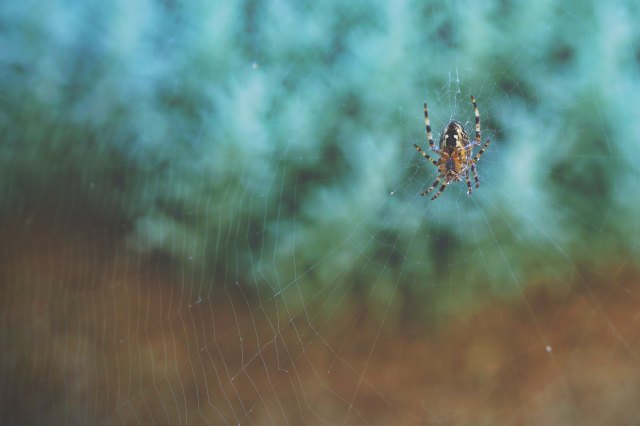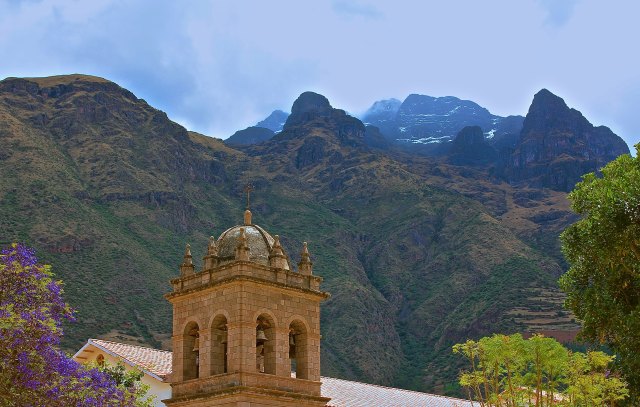 The 18th annual Media Ecology Association conference is coming up this Friday and will run from June 22–25 at Saint Mary’s College of California. I’ll be speaking on Friday (I think around 1:00 pm).
The 18th annual Media Ecology Association conference is coming up this Friday and will run from June 22–25 at Saint Mary’s College of California. I’ll be speaking on Friday (I think around 1:00 pm).
Feel free to drop me a line if you’ll be there and want to connect. Below I’m including the outline and notes for my talk. I’ll likely submit the final paper to the MEA’s journal, Explorations in Media Ecology. More on that soon.
Media Ecology and Bios Theoretikos: Philosophy as Extended Cognition
– In this talk I draw on the work of Peter Sloterdijk to suggest that philosophical ability is closely tied to modes of training (askēsis) that aim to transform awareness through self-overcoming (metanoia). Specifically, I explore the media environments that facilitate philosophical activity and the practices that enable philosophical understanding.
– Philosophy on this view is facilitated by an intricate ecology of affordance spaces—academies, libraries, monasteries, and more—whose design helps train up the individual’s capacity to perform certain maneuvers in thought, maneuvers that make apparent the environments required for the bios theoretikos (the life of contemplation).
– To make this point, I start not with humans and our practices, but with spiders and theirs. As I will show in my talk, when we think of philosophy as an instance of extended cognition, we can draw many parallels between our practices and those of nonhuman species, who like us build artifacts to deepen their perception and understanding.
Thinking like a Spider: Recursion and Extended Cognition
 – I first summarize Hilton Japyassú and Kevin Laland’s recent essay “Extended Spider Cognition,” looking at the difference between central cognition (located in the CNS) and extended cognition (located partially in the environment), or between central processing and peripheral processing.
– I first summarize Hilton Japyassú and Kevin Laland’s recent essay “Extended Spider Cognition,” looking at the difference between central cognition (located in the CNS) and extended cognition (located partially in the environment), or between central processing and peripheral processing.
– Extended cognition helps solve the problem of how a relatively simple CNS can coordinate complex behaviors by outsourcing to built artifacts found in the environment the cognitive resources required for interpretation and response.
– Reciprocal causation (or recursion) between cognition and constructed artifacts. Overtime, the created artifact (the web), and the organism (the spider), continue to co-evolve. The organism’s developmental trajectory anticipates the use of peripheral processing tools (material surrogacy). The web is the spider’s media ecology.
– The web functions as an extended cognitive–perceptual system capable of enhancing specific sensory details. The web modulates the spider’s attentional system, making it more attentive to different kinds of stimuli. The whole media ecological system, rather than the encapsulated organism, is the unit of evolutionary selection and change.
– Crucially, attentional modulation is not activated by a simple mechanical trigger. Instead, the web is constructed in different sections, each one geared towards enabling awareness of certain kinds of events (i.e., the web enhances types of interpretation).
 – The spider constructs its web in part simply by laying down one thread at a time, using previously laid thread as a cue for the next piece of web to lay down, but it also modulates its web spinning and construction by drawing on memory of previous webs and in terms of the purpose for that section of web, making unique decisions as it goes.
– The spider constructs its web in part simply by laying down one thread at a time, using previously laid thread as a cue for the next piece of web to lay down, but it also modulates its web spinning and construction by drawing on memory of previous webs and in terms of the purpose for that section of web, making unique decisions as it goes.
– The spider is thus able to enhance its cognitive situation by coupling itself with its own perception-enhancing artifact. The web is in this sense more than a simple trap or nest. It is a navigation tool that the spider uses to sense its environment more deeply.
– The spider uses its web to scaffold its own understanding of the environment, and to discern more specific meanings from it. For example, different types of thread laid down in different patterns are used to modulate different types of signal transmission (e.g., for detecting small or large prey, or for identifying an approaching mate).
– Further, signal transmission is modulated by the spider’s tensing and releasing of nearby threads, allowing it to monitor and perceive actions from a distance. The spider with its web is thus able to achieve access to its world in a more complex way than it would with its own internally located CNS alone.
– Media ecology is essentially the study of the spider and its web. This is a multispecies media ecology that studies the way an organism modifies itself through the construction of awareness-enhancing artifacts and environments. A multispecies media ecology sees the spider’s situation as fundamentally our own (human) situation.
Media Ecology and Practice as First Philosophy
 – What does media ecology uncover when turned towards the practice of philosophy? Its first comment would be to see philosophy as comprised of a series of actions executed within built environments or contexts, using a set of unique navigation tools.
– What does media ecology uncover when turned towards the practice of philosophy? Its first comment would be to see philosophy as comprised of a series of actions executed within built environments or contexts, using a set of unique navigation tools.
– The media ecology view of philosophy is similar to Sloterdijk’s claim that first philosophy is not metaphysics, aesthetics, ethics, or epistemology but rather practice or training (askēsis) in the direction of conversion through self-overcoming (metanoia).
– In this analogy, what plays the role of the spider’s web for the philosopher? In other words, what artifacts and practices are available to the philosopher that enable him or her to go beyond the limitations of the isolated human CNS?
– Sloterdijk speaks of constructing “new circumstances of practice”—in other words, new media environments—that can serve as practice-amplification zones for the training of philosophical ability. What do these philosophical practice zones look like? How do they modulate our attentional and perceptual systems of understanding?
 – Sloterdijk speaks of specific constructed spaces as externalized forms of metanoia (conversion) and epoché (suspension). For example, of Plato’s academy, Sloterdijk writes,
– Sloterdijk speaks of specific constructed spaces as externalized forms of metanoia (conversion) and epoché (suspension). For example, of Plato’s academy, Sloterdijk writes,
Plato was concerned to provide appropriate accommodation for persons in the precarious state of complete devotion to their thoughts. The original Academy was dedicated to nothing other than innovation in spatial creation. The Academy is the architectural equivalent of what Husserl apostrophized as epoché—a building for shutting out the world and bracketing in concern, an asylum for the mysterious guests we call ideas and theorems. In today’s parlance, we would call it a retreat or a hideaway.
– Epoché and metanoia are practices facilitated by media ecologies such as retreats, monasteries, and libraries. On this view, the philosopher is the person who trains in these practice zones, using them as navigation tools for increasing signal transmission and for attuning to new senses of self and world, expressed as transformations in the individual.
– In the same way the spider tunes and styles its web for specific purposes, the aesthetics of contemplative spaces modulate the philosopher’s cognitive faculties, amplifying attention, permitting sustained practice and repetition, and affording insights that an isolated cognitive system likely would not achieve on its own.
– A media ecology is in this a sense an ecology of facilitation, an affordance space (to use James Gibson’s term), that encourages certain kinds of cognitive modulation and training. Sloterdijk’s architectural epoché, for example, aims at the production of spaces designed for suspending the mundane and promoting the practicing life.
– Philosophy thus issues from within different ecosystems of activity, from within different practice landscapes and basecamps, to use Sloterdijk’s term. We ought to think of these spaces as training grounds for physical transformation, as gymnasiums for contemplative exercise that are aided by unique tools and artifacts.
– Take writing as an example. Writing and editing a work of philosophy is fundamentally the same as a spider spinning its web. A book is not constructed from the mind whole cloth, it is rather laid down one discursive thread at a time, using a set of local cues that help style each line of each letter, finally becoming a whole work.
– Reading is also best understood on the same model. A book is more like a navigation tool that scaffolds and extends in certain ways our cognitive–perceptual system. It creates an environment that affords a new understanding of our situation. A book is like a spider web; it is a tool for navigation, a perception-enhancing artifact.
– Just as a web is geared towards modulating signal transmission, so a book should be thought of as a set of intricate affordance chains that we call sentences, each one highly stylized and laid down to extend our perceptual system. The book on this view does not contain information; it rather affords a possibility for new understanding.
– Acts of philosophical practice are thus best understood as modes of extended action executed and amplified amidst larger media ecologies that afford the bio theoretikos. In this we see a close affinity between the life of the spider and the life of the philosopher, as both are engaged in the construction of media ecologies that facilitate better navigation between and understanding of the relation between self and world.
Excellent! I’m reminded of Latour’s pun summarizing Sloterdijk’s insights: Dasein ist Design. The Spheres trilogy has so many good insights on media: “media theory and sphere theory converge” (Sloterdijk, Bubbles, p. 31).
LikeLike
here Sloterdijk outlines how we are dwelling in the ruins, adrift/disinhibited/disinhabited in groundlessness, seems timely given the recent ‘return’ of history to our politics and the breaking supply chains of internationalism.
LikeLiked by 1 person
good stuff except this “but it also modulates its web spinning and construction by drawing on memory of previous webs and in terms of the purpose for that section of web, making unique decisions as it goes” is pretty speculative (which is fine in terms of framing experiments but not as grounded conclusions) and not really needed for yer argument, hope you get some usefulfeedback.
LikeLike
I found the reasoning fairly sound:
“Moreover, while walking on previously laid lines, spiders do not solely respond automatically to present stimuli, but also rely on memory and attention. Spiders also do not invariably respond instantaneously to the immediate thread configuration because in many contexts spiders walk long journeys (relative to their body sizes) from one point of the web to another, and must keep track of the distances travelled in order to fix the new line at a precise point: they need to memorise the distances travelled at each step, while building the trap (Eberhard 1988b). Frequently the relevant cues are not immediately available (Eberhard 2012a, b), so that the spider must decide where to fix its current thread based on memories about previous decisions in the web-building process. Memory and attention are integral parts of web building, and it is probable that these cognitive processes are even more relevant in the initial, exploratory phase of web building (Hesselberg 2015)” (p. 382).
LikeLike
as I said it’s a good starting point, we have to start with behavior and then bit by bit build the case for physiological foundations/grounding.
LikeLiked by 1 person
this guy makes a lot of sense:
LikeLiked by 1 person
Super helpful distinction there between AE and RE. You agree that AE raises the challenge to RE that Kee thinks it does?
LikeLike
there is a broader parallel issue in talking/thinking about issues like teleonomy, which is part of our ways of understanding/grasping (epistemology if you will) but not part of the systems/dynamics in question. One of the benefits of lab work is that we can test our hypotheses, now in engineering (writ large including projects like you are undertaking here) we have to make do with heuristics/models/etc (tools) and should try and keep in mind (to the degree we can) their affordances/resistances and not con-fuse them with what Is. The spider web is relatively bounded in ways that perhaps human domains (libraries, labs, etc) are not so raises all kinds of questions about how much control one has, ever onward…
LikeLike
think of Dennett’s intuition pumps, Wittgenstein’s perspicuous re-minders, Haraway’s cyborgs and string figures, Bennett’s strategic animism, and so on, a new form of poetic dwelling if you will.
LikeLike
LikeLike